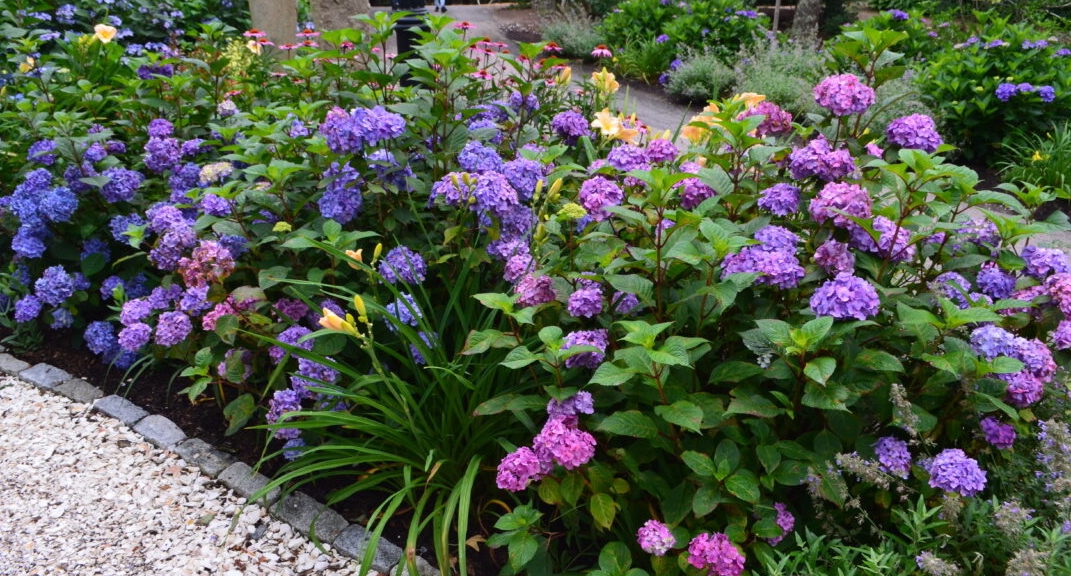
How to Keep (or Change) Your Hydrangeas to Pink, Blue, or Purple
Share
Hydrangeas are one of those plants that make gardeners stop and stare—and one of the coolest things about them is that some can actually change color. But not all hydrangeas play along in the color-changing game, and the secret comes down to the variety of hydrangea and your soil. Let’s dig into which types can shift shades, how to make it happen, how to test your soil, and when to prune so you don’t accidentally chop off next year’s blooms.
Which Varieties of Hydrangeas Can Change Color?
Only Hydrangea macrophylla (Bigleaf Hydrangea) and Hydrangea serrata (Mountain Hydrangea) can truly swing between pink, purple, or blue blooms. These are your classic mopheads and lacecaps, famous for their big clusters of color.
Color-changeable varieties include:
- Endless Summer® Series - like 'Bloomstruck’ or 'Pop Star'
- Let’s Dance® Series - like ‘Rhythmic Blue’ or ‘Big Easy’)
- Many traditional mophead or lacecap types labeled as Hydrangea macrophylla
Hydrangeas that do NOT change color include:
- Hydrangea paniculata (Panicle Hydrangea) – like ‘Eclipse’, ‘Limelight’ or ‘Bobo’
- Hydrangea arborescens (Smooth Hydrangea) – like 'Flowerfull' or ‘Annabelle’
- Hydrangea quercifolia (Oakleaf Hydrangea) – like ‘Jetstream’ or ‘Alice’
These types bloom white, cream, greenish, or pink as they age, but soil chemistry won’t turn them blue or purple.
The Science Behind Hydrangea Color Changes
Hydrangea color comes down to soil pH:
- Acidic soil (pH below 6) makes aluminum available to the plant, producing blue blooms.
- Alkaline soil (pH above 7) locks up aluminum, creating pink blooms.
- Slightly acidic soil (around pH 6–6.5) can result in those gorgeous lavender or purple tones.
How to Test Your Soil
Before you start sprinkling lime or acidifier around, it’s wise to know your starting point. Soil testing tells you your current pH and helps avoid overdoing any amendments.
- Grab a soil sample from around the root zone of your hydrangea (a few inches below the surface).
- Mix soil from a few spots around the plant for a good average.
- Use a soil test kit to measure your pH.
We carry easy-to-use soil test kits right here in the garden center.

How to Turn Your Hydrangeas Blue
- Lower your soil pH to around 5.2–5.5.
- Apply Espoma's Soil Acidifier or Espoma's Holly-Tone in early spring and again mid-summer.
- Mulch with organic materials like pine needles, peat moss, or coffee grounds to help maintain acidity.

How to Turn Your Hydrangeas Pink
- Raise your soil pH to around 6.5–7 or higher.
- Add Espoma's Garden Lime in fall or early spring to reduce soil acidity.
- Avoid fertilizers high in aluminum.
- Monitor your soil pH so it stays on the alkaline side.
![]()
 How to Get Purple Hydrangeas
How to Get Purple Hydrangeas
Purple blooms are a bit trickier and often pop up when your soil sits around neutral (pH 6–6.5). To encourage purple:
- Keep your soil slightly acidic—but not as low as for blue blooms.
- Use smaller amounts of soil acidifier than you would for pure blue.
- Embrace the mystery—sometimes purple just happens depending on the plant variety and soil chemistry!
When to Prune Color-Changing Hydrangeas
Pruning at the wrong time is one of the biggest reasons hydrangeas don’t bloom. Most Bigleaf and Mountain Hydrangeas bloom on old wood—meaning last year’s stems. Reblooming varieties (like Endless Summer®) can also bloom on new wood, but it’s still safest to prune right after flowering.
- Prune immediately after blooms fade in summer—no later than mid-August in colder climates.
- Remove spent blooms and tidy up the shape.
- Avoid hard pruning in fall or early spring, or you risk losing next season’s flowers.
Final Tip: Test, Then Tweak
Soil chemistry can change slowly over time, so test your soil each year if you’re chasing specific hydrangea colors. And remember: sometimes hydrangeas do their own thing no matter how much you try to steer them. That’s part of their charm!
If you’re unsure how to start, come see us at the garden center. We’d love to help you keep your hydrangeas blooming beautifully—whether pink, blue, or purple.
SHOP OUR HYDRANGEA COLLECTION >>
All images in this blog post are courtesy of Endless Summer Hydrangeas.

